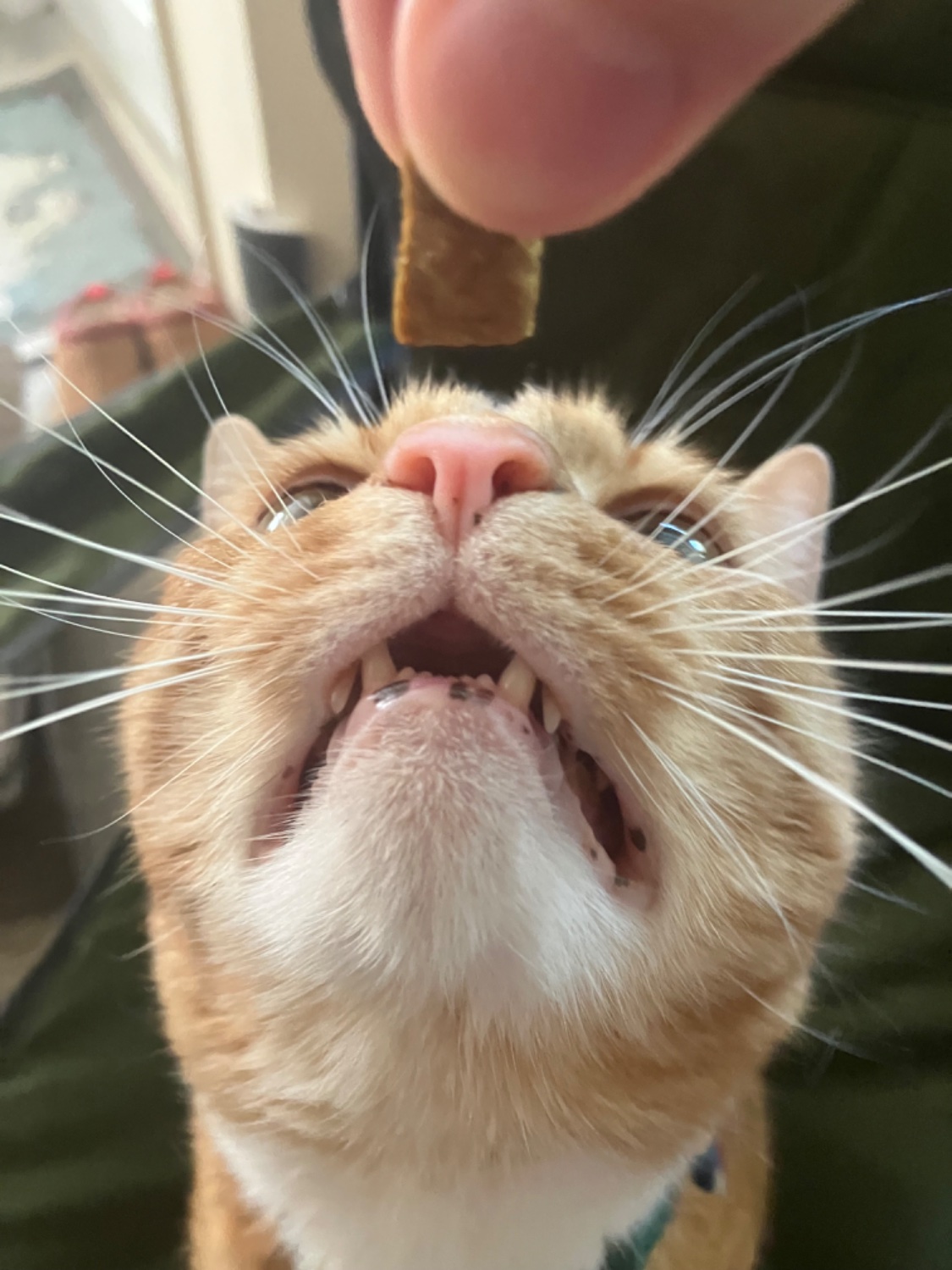Doesn’t seem to, they announced this a couple months ago
Anki is great! Half my med school class uses it
100% true. Can’t also forget about nearly everyone getting cataracts by the time they’re in their 60’s!
See this is why I will randomly delete half of my DSO exposures before stacking. Don’t want unlucky data ruining the final image /s
I had like 5 seconds of panic because there was a gray spot in my vision after I accidentally looked at a baileys bead completely unfiltered through my telescope the second the eclipse ended. Turns out I just had a smudge on my glasses :P
It actually looks like it's namesake!
This is a combo of SHO hubble palette + true color RGB for the stars. Captured in October 2025 from a Bortle 9 zone.
Places where I host my other images:
-
TPO 6" F/4 Imaging Newtonian
-
Orion Sirius EQ-G
-
ZWO ASI1600MM-Pro
-
Skywatcher Quattro Coma Corrector
-
ZWO EFW 8x1.25"/31mm
-
Astronomik LRGB+CLS Filters- 31mm
-
Astrodon 31mm Ha 5nm, Oiii 3nm, Sii 5nm
-
Agena 50mm Deluxe Straight-Through Guide Scope
-
ZWO ASI-290mc for guiding
-
Moonlite Autofocuser
Acquisition: 49 hours 56 minutes (Camera at -15°C)
-
Ha - 63x600"
-
Oiii - 122x600"
-
Sii - 102x600"
-
R - 63x60"
-
G - 63x60"
-
B - 63x60"
-
Darks- 30
-
Flats- 30 per filter
Capture Software:
- Captured using N.I.N.A. and PHD2 for guiding and dithering.
PixInsight Preprocessing:
-
BatchPreProcessing
-
StarAlignment
-
Blink
-
ImageIntegration per channel
-
DrizzleIntegration (2x, Var β=1.5)
-
Dynamic Crop
Narrowband linear:
-
MultiscaleGradientCorrection using MARS project data (had to do good ol fashioned DBE for the Sii channel)
-
BlurXterminator
-
StarXterminator to completely remove stars
-
STF applied via HistogramTransformation to stretch nonlinear
RGB Linear:
Channelcombination to make color image from RGB stacks
-
MultiscaleGradientCorrection (this is some seriously impressive shit!)
-
SpectrophotometricColorCalibration
-
BlurX (correct only mode)
-
HSV Repair
-
StarX to extract a stars only image
-
ArcsinhStretch + HistogramTransformation to stretch nonlinear
-
Slight curves saturation boost
Nonlinear processing:
-
Pixelmath to combine stretched narrowband images into color image (SHO/Hubble palette)
-
SCNR > Invert > SCNR > Invert to remove some greens and magentas
-
DeepSNR
-
Shitloads of curve transformations to adjust luminance, contrast, saturation, etc
-
HistogramTransformation to further stretch the red channel a little
-
more curves
-
NoiseX for some small scale chrominance noise reduction
-
Pixelmath to add in the stretched RGB stars only image from earlier
This basically re-linearizes the two images, adds them together, and then stretches them back to before. More info on it here)
mtf(.005,
mtf(.995,Stars)+
mtf(.995,Starless))
-
Slight SCNR
-
Resample to 65%
-
Annotation
What equipment/processing did you use?
I totally didn't procrastinate processing this thing, and it's just pure coincidence that I finally took a stab at it in October...
In hindsight, this really could've used another night of data (particularly the L), but I only had one clear night at the dark site. I was just happy to get out of the light pollution and shoot a dark nebula for once! Captured on August 17th, 2025 from a bortle 3 zone (deerlick astronomy village).
Places where I host my other images:
-
TPO 6" F/4 Imaging Newtonian
-
Orion Sirius EQ-G
-
ZWO ASI1600MM-Pro
-
Skywatcher Quattro Coma Corrector
-
ZWO EFW 8x1.25"/31mm
-
Astronomik LRGB+CLS Filters- 31mm
-
Astrodon 31mm Ha 5nm, Oiii 3nm, Sii 5nm
-
Agena 50mm Deluxe Straight-Through Guide Scope
-
ZWO ASI-290mc for guiding
-
Moonlite Autofocuser
Acquisition: 7 hours 21 minutes (Camera at -15°C), half unity gain
-
L - 56x180"
-
R - 30x180"
-
G - 30x180"
-
B - 31x180"
-
Darks- 30
-
Flats- 30 per filter
Capture Software:
- Captured using N.I.N.A. and PHD2 for guiding and dithering.
PixInsight Preprocessing:
-
BatchPreProcessing
-
StarAlignment
-
Blink
-
ImageIntegration per channel
-
DrizzleIntegration (2x, Var β=1.5)
For the L channel I did 3 stacks each with 1/3rd of the data, then combined them to an RGB image (was still grayscale) to use deepSNR noise reduction. after this it was properly converted to mono
-
Dynamic Crop
-
MultiscaleGradientCorrection
First time trying out the MARS thing in pixinsight. It seems to work very well
Luminance Linear:
-
BlurXterminator
-
Stars removed with starx
-
ArcsinhStretch + HistogramTransformation to stretch nonlinear
RGB Linear:
-
ChannelCombination to combine monochrome R G and B images in to single color image
-
MultiscaleGradient Correction
-
SpectrophotometricColorCalibration
-
BlurXterminator (correct stars only)
-
HSV Repair
-
Extracted stars with starXterminator, to be used later for independent starless processing
-
ArcsinhStretch + HistogramTransformation to stretch nonlinear
-
Slight saturation curve boost
** Stars only processing:**
-
ArcsinhStretch + HistogramTransformation to stretch nonlinear
-
Slight SCNR to remove greens and magentas
-
Curves to boost saturation
Nonlinear Processing:
-
LRGBCombination to combine stretched RGB and L images
-
DeepSNR Noise reduction
-
Several rounds of curve adjustments for lightness, contrast, saturation, color balance, with various masks
-
LocalHistogramEqualization
-
More curves
-
Pixelmath to add in the stretched RGB stars only image from earlier
This basically re-linearizes the two images, adds them together, and then stretches them back to before. More info on it here)
mtf(.005,
mtf(.995,Stars)+
mtf(.995,Starless))
-
BlurX to sharpen the stars a little
-
Even more curves
-
Slight SCNR
-
Resample to 70%
-
Tighter crop in on just the nebula
-
Annotation
What equipment/settings/processing did you use for this image?











Bad Romance by Lady Gaga. Idc if I’m a man in his late 20’s I’m putting my heart and soul into it